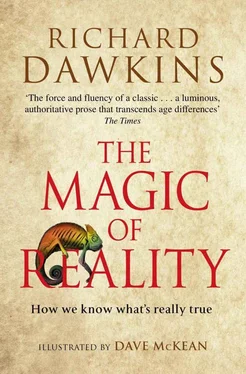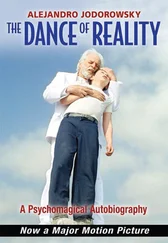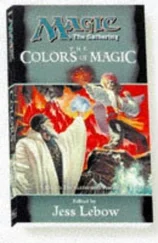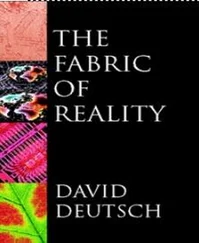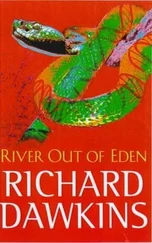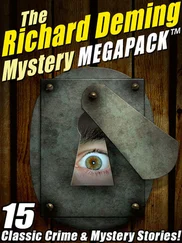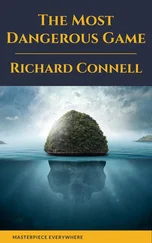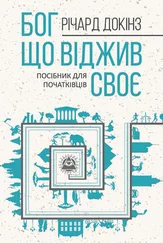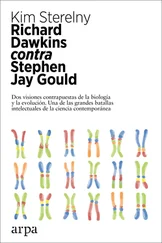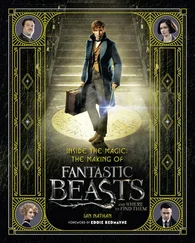Exactly how they do it varies from species to species. Genes survive in bird or bat bodies by helping to build wings. Genes survive in mole bodies by helping to build stout, spade-like hands. Genes survive in lion bodies by helping to build fast-running legs, and sharp claws and teeth. Genes survive in antelope bodies by helping to build fast-running legs, and sharp hearing and eyesight. Genes survive in leaf-insect bodies by making the insects all but indistinguishable from leaves. However different the details, in all species the name of the game is gene survival in gene pools. Next time you see an animal – any animal – or any plant, look at it and say to yourself: what I am looking at is an elaborate machine for passing on the genes that made it. I’m looking at a survival machine for genes.
Next time you look in the mirror, just think: that is what you are too.
4. WHAT ARE THINGS MADE OF?

IN VICTORIAN TIMES, a favourite book for children was Edward Lear’s Book of Nonsense . As well as the poems about the Owl and the Pussycat (which you may know because it is still famous), The Jumblies and The Pobble Who Has No Toes, I love the Recipes at the end of the book. The one for Crumboblious Cutlets begins like this: ‘Procure some strips of beef, and having cut them into the smallest possible slices, proceed to cut them still smaller, eight or perhaps nine times.’
What do you get if you keep on cutting stuff into smaller and smaller pieces?
Suppose you take a piece of anything and cut it in half, using the thinnest and sharpest razor blade you can find.
Then you cut that in half, then cut that half in half, and so on, over and over again.
Do the pieces eventually get so small that they can’t get any smaller? How thin is the edge of a razor blade? How small is the sharp end of a needle?
What are the smallest bits that things are made of?
The ancient civilizations of Greece, China and India all seem to have arrived at the same idea that everything is made from four ‘elements’: air, water, fire and earth. But one ancient Greek, Democritus, came a bit closer to the truth. Democritus thought that, if you cut anything up into sufficiently small pieces, you would eventually reach a piece so small that it couldn’t be cut any further. The Greek for ‘cut’ is tomos , and if you stick an ‘a’ in front of a Greek word it means ‘not’ or ‘you can’t’. So ‘a-tomic’ means something too small to be cut any smaller, and that is where our word ‘atom’ comes from. An atom of gold is the smallest possible bit of gold. Even if it were possible to cut it any smaller, it would cease to be gold. An atom of iron is the smallest possible bit of iron. And so on.
We now know that there are about 100 different kinds of atoms, of which only about 90 occur in nature. The few others have been concocted by scientists in the lab, but only in tiny quantities.
Pure substances that consist of one kind of atom only are called elements (same word as was once used for earth, air, fire and water, but with a very different meaning). Examples of elements are hydrogen, oxygen, iron, chlorine, copper, sodium, gold, carbon, mercury and nitrogen. Some elements, such as molybdenum, are rare on Earth (which is why you may not have heard of molybdenum) but commoner elsewhere in the universe (if you wonder how we know this, wait for Chapter 8).
Metals such as iron, lead, copper, zinc, tin and mercury are elements. So are gases such as oxygen, hydrogen, nitrogen and neon. But most of the substances that we see around us are not elements but compounds. A compound is what you get when two or more different atoms join together in a particular way. You’ve probably heard water referred to as ‘H 2O’. This is its chemical formula, and means it is a compound of one oxygen atom joined to two hydrogen atoms. A group of atoms joined together to make a compound is called a molecule . Some molecules are very simple: a molecule of water, for example, has just those three atoms. Other molecules, especially those in living bodies, have hundreds of atoms, all joined together in a very particular way. Indeed, it is the way they are joined together, as well as the type and number of atoms, that makes any particular molecule one compound and not another.
You can also use the word ‘molecule’ to describe what you get when two or more of the same kind of atom join together. A molecule of oxygen, the gas we need in order to breathe, consists of two oxygen atoms joined together. Sometimes three oxygen atoms join together to form a different kind of molecule called ozone. The number of atoms in a molecule really makes a difference, even if the atoms are all the same.
Ozone is harmful to breathe, but we benefit from a layer of it in the Earth’s upper atmosphere, which protects us from the most damaging of the sun’s rays. One of the reasons Australians have to be especially careful when sunbathing is that there is a ‘hole’ in the ozone layer in the far south.
Crystals – atoms on parade
A diamond crystal is a huge molecule, of no fixed size, consisting of millions of atoms of the element carbon stuck together, all lined up in a very particular way. They are so regularly spaced inside the crystal, you could think of them as being like soldiers on parade, except that they are parading in three dimensions, like a shoal of fish. But the number of ‘fish’ in the shoal – the number of carbon atoms in even the smallest diamond crystal – is gigantic, more than all the fish (plus all the people) in the world. And ‘stuck together’ is a misleading way to describe them if it makes you think of the atoms as solid lumps of carbon closely packed with no space in between. In fact, as we shall see, most ‘solid’ matter consists of empty space. That will take some explaining! I’ll come back to it.
All crystals are built up in the same ‘soldiers-on-parade’ way, with atoms regularly spaced in a fixed pattern that gives the whole crystal its shape. Indeed, that is what we mean by a crystal. Some ‘soldiers’ are capable of ‘parading’ in more than one way, producing very different crystals. Carbon atoms, if they parade in one way, make the legendarily hard diamond crystals. But if they adopt a different formation they make crystals of graphite, so soft it is used as a lubricant.
We think of crystals as beautiful transparent objects, and we even describe other things like pure water as ‘crystal clear’. But actually, most solid stuff is made of crystals, and most solid stuff is not transparent. A lump of iron is made of lots of tiny crystals packed together, each crystal consisting of millions of iron atoms, spaced out ‘on parade’ like the carbon atoms in a diamond crystal. Lead, aluminium, gold, copper – all are made of crystals of their different kinds of atoms. So are rocks, like granite or sandstone – but they are often mixtures of lots of different kinds of tiny crystals all packed together.
Sand is crystalline, too. In fact, many sand grains are just little bits of rock, ground down by water and wind. The same is true of mud, with the addition of water or other liquids. Often, sand grains and mud grains get packed together again to make new rocks, called ‘sedimentary’ rocks because they are hardened sediments of sand and mud. (A ‘sediment’ is the bits of solid stuff that settle in the bottom of a liquid, for example in a river or lake or sea.) The sand in sandstone is mostly made of quartz and feldspar, two common crystals in the Earth’s crust. Limestone is different. Like chalk it is calcium carbonate, and it comes from ground-down coral skeletons and sea shells, including the shells of tiny single-celled creatures called forams. If you see a very white beach, the sand is most likely calcium carbonate from the same shelly source.
Читать дальше
